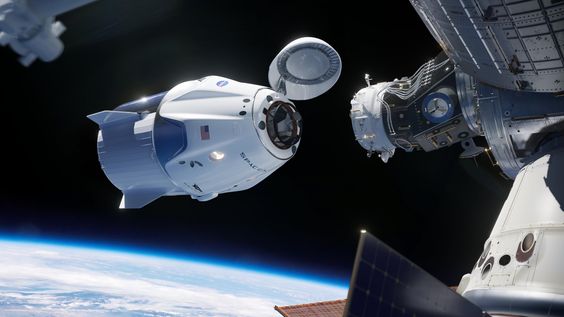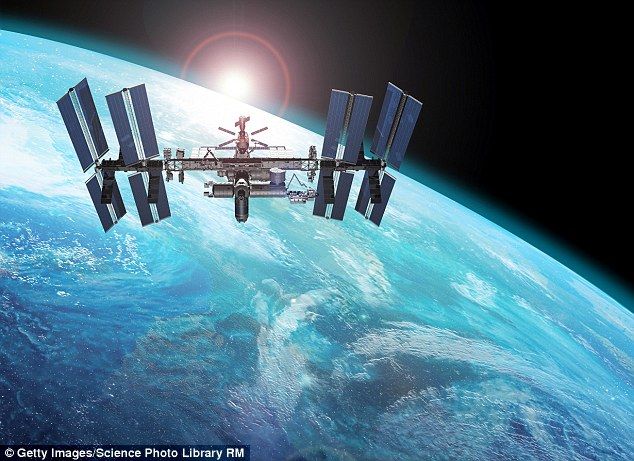NASA Astronauts Launch on an Epic Mission to the International Space Station with SpaceX
NASA Astronauts Launch on an Epic Mission to the International Space Station with SpaceX
NASA astronauts were launched into space on a SpaceX rocket, starting a journey to the International Space Station (ISS), in a momentous event that signaled the beginning of a new era in space exploration. Beyond the confines of our planet, this launch was momentous because it marked the beginning of a commercial age in space flight, the culmination of cooperative efforts, and scientific advancements. Let’s examine the details of the SpaceX launch and the important components that contributed to this mission being a significant turning point in human spaceflight.
A Novel Era in Space Exploration:

The field of space exploration has changed as a result of NASA and SpaceX’s collaboration. This launch was the first commercial aerospace firm crewed trip to the International Space Station. Elon Musk established SpaceX, which has been at the vanguard of space flight innovation. The Crew-1 mission demonstrated the potential of the private sector to lead the way in expanding humankind’s reach into space.
Overview of the SpaceX Crew-1 Mission:

Four astronauts were chosen for the Crew-1 mission, which was a part of NASA’s Commercial Crew Program, to go on this historic journey:
Commander Michael Hopkins: A seasoned astronaut with previous spaceflight experience.
Pilot Victor Glover: The first Black astronaut to live on the ISS for an extended period.
Mission Specialist Shannon Walker: An experienced astronaut and scientist.
Mission Specialist Soichi Noguchi: A Japanese astronaut representing international collaboration.
Their vehicle, dubbed Resilience, was a Crew Dragon spacecraft that was on a Falcon 9 rocket and prepared to launch them into space.
The SpaceX launch’s technological marvels include reusable rockets.

The employment of reusable rocket technology is one of the defining characteristics of SpaceX’s space travel strategy. The Crew Dragon was launched into space using a Falcon 9 rocket that had been utilized on prior missions. This novel strategy may drastically lower the price of space flight, increasing its sustainability and viability from an economic standpoint.
Dragon Spacecraft Crew:
The ultimate manifestation of SpaceX’s design expertise is the completely autonomous Crew Dragon spaceship. Modern life support systems, touchscreen controls, and a visually appealing cabin make the spaceship more than simply a means of transportation—it’s a monument to the successful blending of form and function.
Global Cooperation:
The fact that Japanese astronaut Soichi Noguchi is a part of the Crew-1 mission emphasizes how global space exploration is. International astronauts working together exemplify the cooperation attitude that characterizes humanity’s search for knowledge beyond Earth.
The International Space Station Journey: Orbital Docking:
The Crew Dragon spacecraft showed off its sophisticated docking skills when it reached the ISS on its own. Accurate orbital navigation is essential to a secure and smooth docking procedure.
Duration of the expedition:
The Crew-1 astronauts’ protracted stay on the International Space Station (ISS) demonstrated humanity’s capacity to survive and operate for extended periods in the weightless environment of space. The length of this mission permits a great deal of scientific investigation and testing.
Scientific Consignments:
A range of scientific payloads, from microgravity experiments to technological demonstrations, were transported by the Crew Dragon. These projects have applications for life on Earth as well as advancing our knowledge of basic scientific concepts.
Consequences for Space Travel’s Future: Commercial Viability
The Crew-1 mission’s success confirms that space flight is a profitable endeavor. The growing prominence of private firms such as SpaceX creates opportunities for increased access to space, tourism, and economic endeavors.
Future Plans for Space Travel:
Science fiction is no longer the only place to find the possibility of citizens traveling into space for leisure. The idea of common people seeing the magnificence of space is almost here, thanks to private enterprises that are actively working on space tourism programs.
Motivating the Upcoming Generation:
Future generations of scientists, engineers, and space enthusiasts find inspiration in the accomplishments of the Crew-1 mission. When astronauts are seen boarding a SpaceX spaceship, it has come to represent human inventiveness and the boundless opportunities that exist outside of our atmosphere.
Obstacles and Knowledge Gained: Reducing Hazards:
There are hazards associated with space flight, and the Crew-1 mission highlights the significance of strong safety procedures. Future mission safety depends on a dedication to risk mitigation, constant technological advancements, and stringent testing procedures.
Getting Over Obstacles:
Because space missions are dynamic, flexibility is necessary. A real-time ability to adapt and solve problems is essential for successful space operations, whether they include responding to weather changes or unforeseen technological issues.
Conclusion: A Change in Space Exploration Paradigm
A paradigm change in the field of space exploration has occurred with the launch of NASA astronauts by SpaceX to the International Space Station. It marks the beginning of commercial space flight, the coming together of public and private endeavors, and a renewed feeling of wonder for the universe. As the Crew-1 mission progresses, mankind observes not only a voyage to the International Space Station (ISS), but also the beginning of a new phase in our investigation of the last frontier. The accomplishment of this mission is evidence of human ingenuity, tenacity, and the unwavering spirit of exploration that drives us toward the sky.








